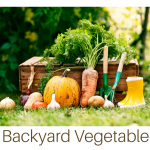Beginning backyard vegetable gardens are gaining popularity. The benefits of vegetable gardening go way beyond simply saving money. Let's face it, there is nothing like the taste of a homegrown tomato. Here's a guide to getting your backyard garden growing. What Is Your Growing Zone? This is an important one. Your Growing Zone lets you know what you can plant, … [Read more...] about Beginning Backyard Vegetable Gardens
Urban Homesteading
Easy Homemade Nut Milk Recipe
Commercial almond milk has become a mainstay on grocery store shelves. While I bought it for a while, once you start making your own, you never go back. Homemade nut milk doesn't come with unnecessary additives known to mess with your gut. Plus, making your own nut milk allows you to add your own choice of sweeteners if desired. Let's get started, shall we? How Hard … [Read more...] about Easy Homemade Nut Milk Recipe
Red Lobster Cheese Biscuit Bread Recipe
I love that Red Lobster cheese biscuit that makes you sigh with delight each bite you take. I wanted to make them at home, but I didn't want to go to the work of making individual biscuits. Instead, I decided to try this recipe for Red Lobster Cheese Biscuit Bread. Baking this copycat bread in a loaf pan means less hands on time in the kitchen, and that makes this busy Mama … [Read more...] about Red Lobster Cheese Biscuit Bread Recipe
Make Perfect Stove Popped Popcorn
We are big stove popped popcorn eaters around here. I pretty much pop a pan a day. My kids grew up on it. Cheap and whole grain healthy, with a long term storage life and the added bonus of being quick and easy to make, popcorn is a food storage mainstay. Which Pot Should You Choose? Your choice of pot to pop popcorn in is very important. It needs to have a heavy … [Read more...] about Make Perfect Stove Popped Popcorn
How To Make The Most Of Survival Seeds
"I bought these survival seeds so that I can grow all my own food when the SHTF". I hear this a lot. Often from people who have never planted a seed in their entire lives. Experienced gardeners must be doing a terrific job of making their work look super easy for so many people to figure that if the world were to explode, they could just till up a little bit of dirt, … [Read more...] about How To Make The Most Of Survival Seeds





